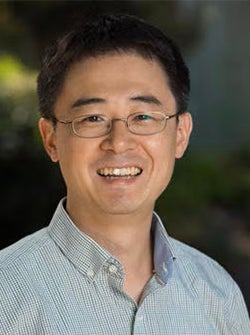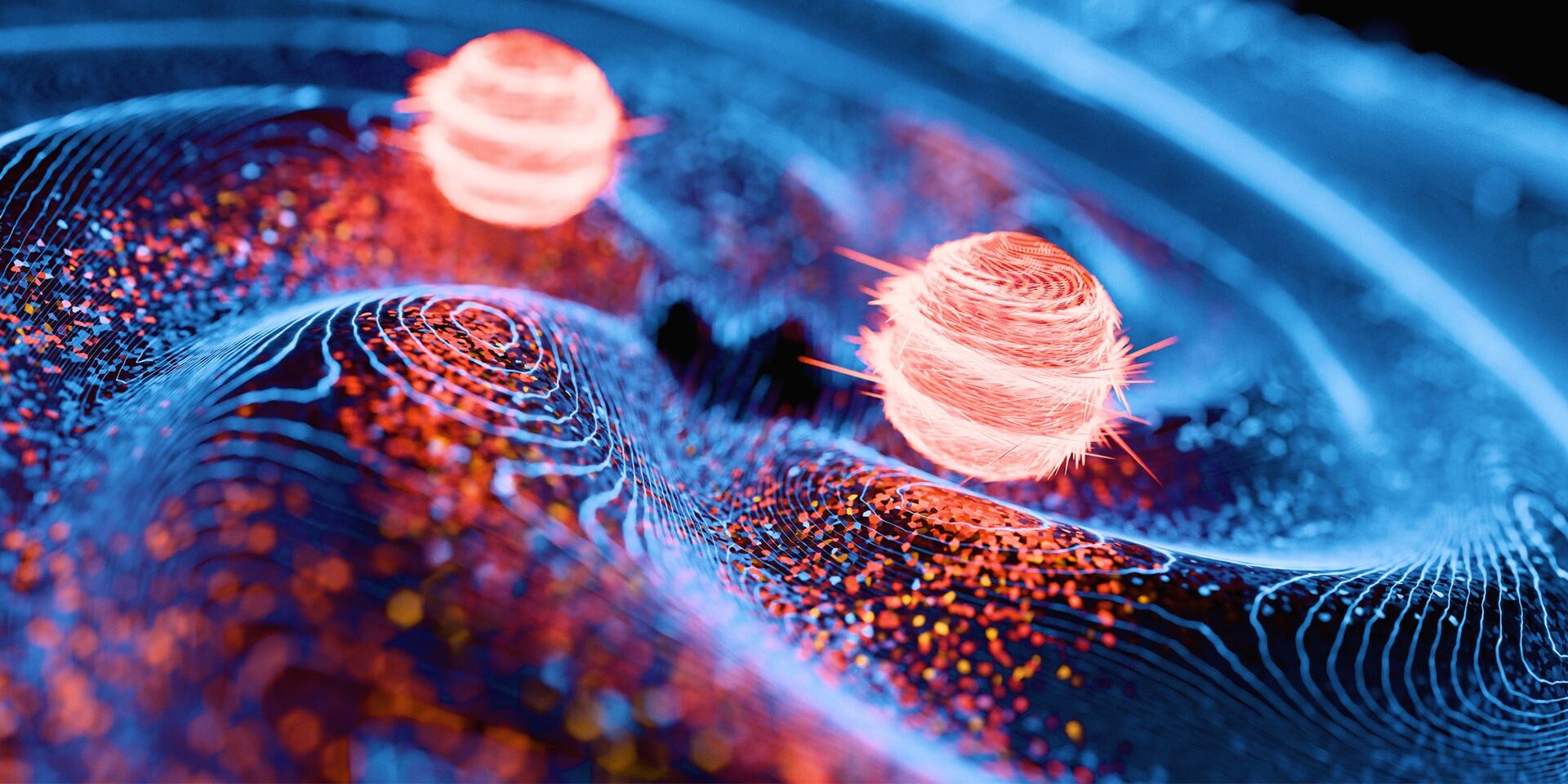Quantum computers can solve complex problems in seconds—problems that would take thousands of years for today’s most powerful traditional computers. This makes them especially promising for data-intensive applications such as those in drug development, machine learning, genetic sequencing, and climate modeling.
Advancing quantum computing, however, has been hampered by a longstanding technical challenge: surface and interface imperfections in the superconducting metals where quantum computations occur. These anomalies introduce interference and instability, disrupting the delicate quantum states needed for quantum computing with minimal error rates.

Peng Wei
Peng Wei, an associate professor of physics at UC Riverside, has developed a way around this problem. He has filed for a U.S. patent on a novel process that enhances the performance of quantum computers by coating niobium metal superconductor surfaces with an ultra-thin layer of gold.
By applying a gold layer just ten or so atoms thick, Wei’s team can smooth over surface defects in niobium that disrupt quantum behavior, while preserving the superconducting properties essential to quantum computing.
“By using gold in these key interfaces, we’re able to maintain a cleaner signal path and reduce loss in the superconducting circuit,” Wei said.
While traditional semiconductor research often focuses on the internal properties of a material, Wei and his team have examined the outermost atomic layers—where even minuscule inconsistencies can be amplified in quantum systems.
Unlike traditional computers, which encode information in binary bits—0s and 1s—quantum computers use quantum bits, or qubits. Qubits can exist in multiple states simultaneously due to a phenomenon called superposition. In superconductors such as niobium, qubits are carried by quantum coherent pairs of electrons known as Cooper pairs.
“The problem with superconducting surfaces is that they’re never perfect,” Wei explained. “These defects become little traps to break Cooper pairs, which can compromise the qubit performance.”
This causes quantum decoherence—when a qubit loses its quantum coherent state. It remains one of the main obstacles preventing quantum computers from scaling up and operating reliably. Even in ultracold, ultra-isolated labs, unwanted energy can seep into a quantum system from material imperfections or environmental noise, rendering calculations useless.
Wei’s gold coating acts as a quantum shield to deal with this problem. Gold doesn’t oxidize or chemically react under most conditions. And when applied in a uniform atomic layer, it forms a smooth, stable surface that resists noise-inducing contamination. Yet because the gold layer is so thin, it doesn’t negatively impact superconductivity in the underlying niobium and at the same time allows Cooper pairs to flow within the gold layer with low loss.
“That balance was critical,” Wei said. “Too thick, and we kill the superconductivity. Too thin, and the defects still dominate. We found a sweet spot.”
The process of applying the gold layer, Wei added, is compatible with existing fabrication techniques. That could make it attractive to companies racing to develop commercial quantum processors. He uses what’s called an “epitaxial” process, essentially growing a crystalline layer of gold over the niobium surface.
“Quantum processors need better superconductor materials and consistency,” Wei said. “This technique offers a path to make them more stable, more repeatable, and ultimately, more scalable.”
The innovation has already drawn attention from industry and research institutions, including scientists from National Institute of Standards and Technology (NIST) in developing high Q-factor superconductor resonators, and Massachusetts Institute of Technology (MIT) and SEEQC Inc in their recent work on efficient superconducting diodes and rectifiers published in Nature Electronics in collaboration with Wei.
Wei’s group is now working to refine the heterostructure process, test its compatibility with other superconducting material, and develop better quantum sensors.
The research was supported by a National Science Foundation CAREER award to Wei. UCR’s Office of Technology Partnerships (OTP) is working with Wei to commercialize his innovation.
The office filed a U.S. patent application and provided Wei with licensing and intellectual property support, and is helping Wei with plans for establishing a startup company, among other assistance.
“This is just the beginning,” Wei said.
Header image: Abstract conceptualization of atomic particles in a quantum state.
